#Apollo 14 Command Module
Explore tagged Tumblr posts
Text
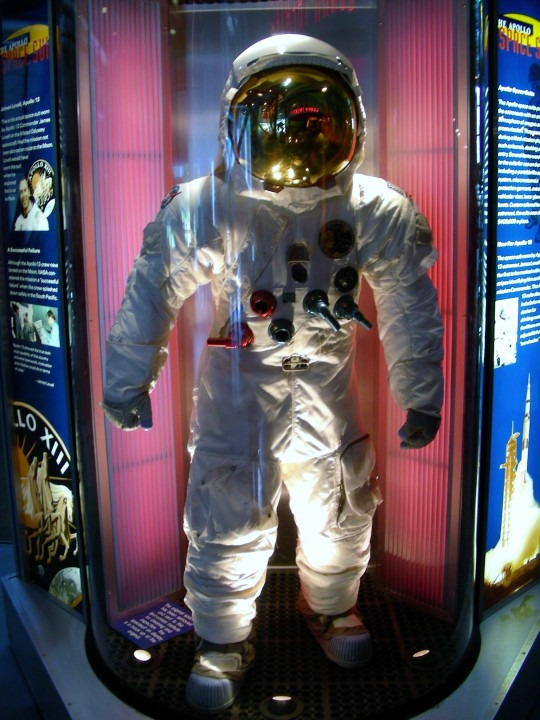


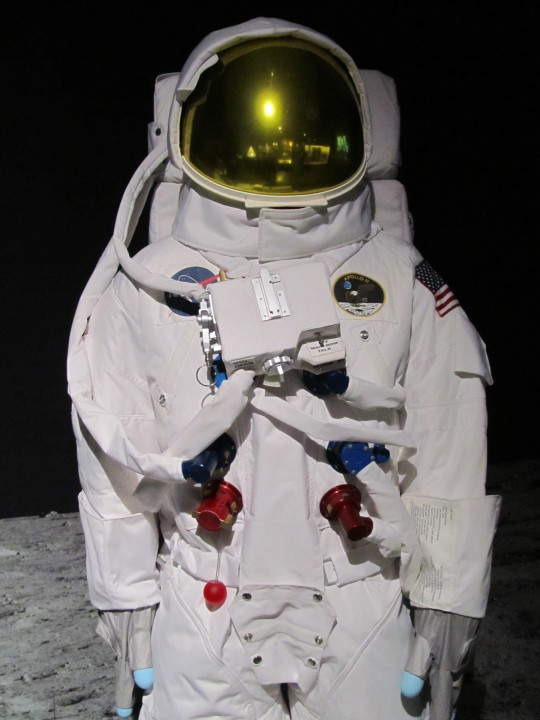

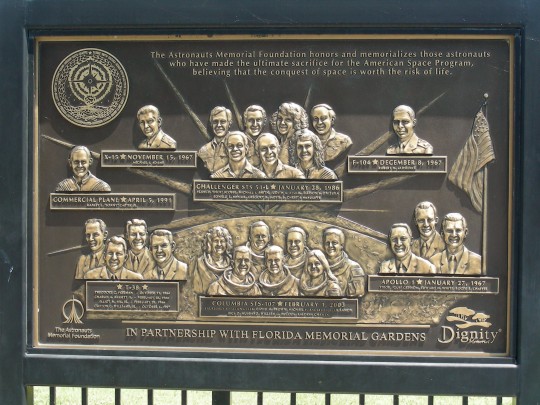
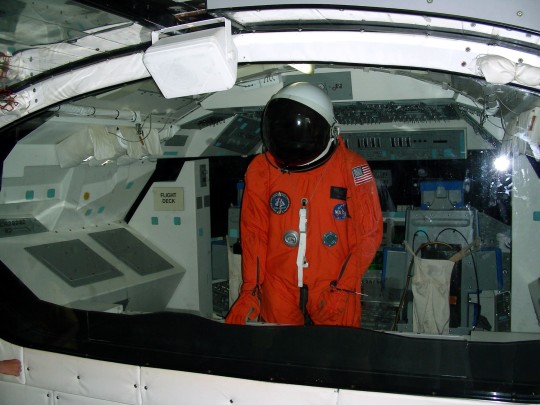


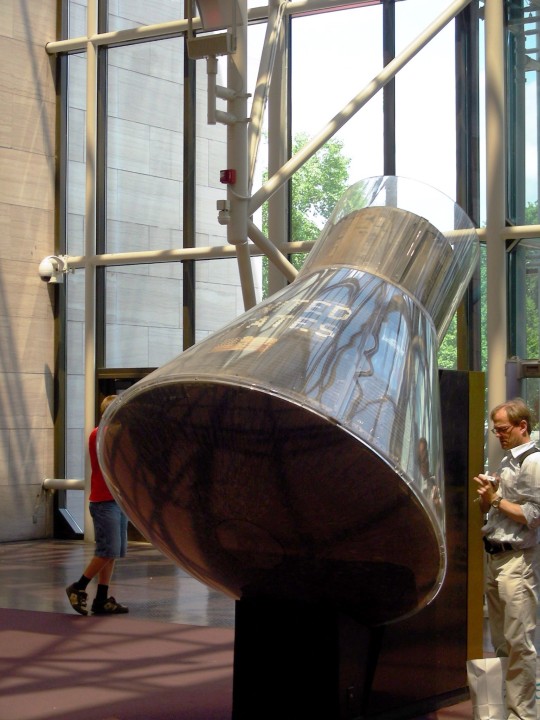


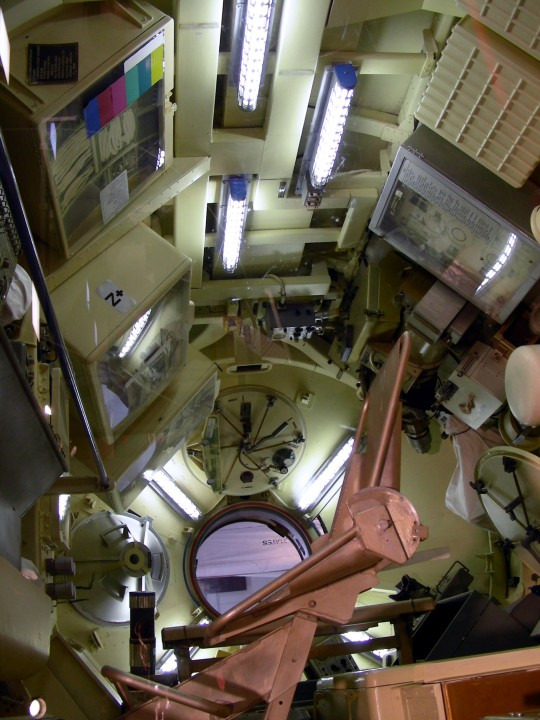
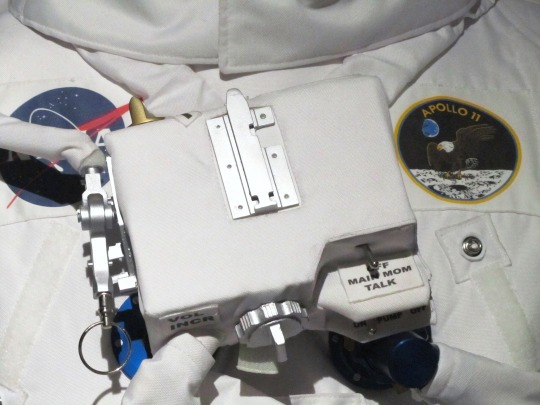
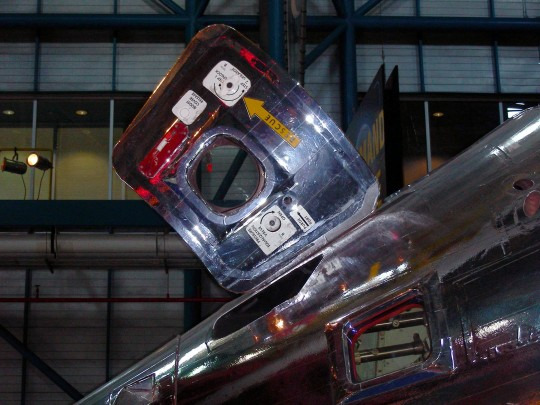

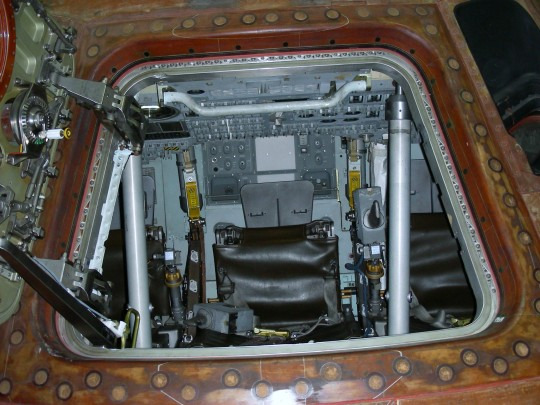
National Astronaut Day
Blast off into an out-of-this-world celebration! Learn about space, astronauts, and explore the cosmos. It's time to reach for the stars!
Space travel brings with it a myriad of adventures and discoveries! And the astronauts who get to travel in space are a rare and special type of person. Take time on National Astronaut Day to celebrate these people who have had some of the most unique experiences possible for a human being by traveling beyond the earth and through space!
History of National Astronaut Day
The first American made his adventure into space travel on May 5, 1961, when Alan Bartlett Shepard Jr. made his historic 15 minute suborbital space journey. Since that time, the astronauts and cosmonauts who have continued the expedition into the virtually unknown world of space have been heroes of exploration!
National Astronaut Day was founded to pay honor and respect to the American astronauts of NASA (National Aeronautics and Space Administration). The purpose behind the day is to provide an opportunity for astronauts to share their stories and experiences for the rest of the world. The hope is that these types of stories will encourage and inspire young people to pursue an interest in the space sciences.
The first National Astronaut Day took place in 2017 and the day has been celebrated annually ever since to commemorate that first time of the United States human flight in space. The day was founded by the Uniphi Space Agency, which is a talent and marketing agency that has represented at least 20 different NASA astronauts.
National Astronaut Day Timeline
April, 1961 First astronaut enters space
Russian Cosmonaut Yuri Gagarin is the first human to enter into space.
May, 1961 First American astronaut launches into space
Just a few weeks after the Russians entered space, Alan Shepard becomes the first American in space.
July, 1969 First men on the moon
Astronauts Neil Armstrong and “Buzz” Aldrin become the first men on the moon.
June, 1984 First American woman in space
Sally Ride becomes the first American woman in space, on the Space Shuttle Challenger.
November, 2000 Astronauts live on the space station
The first long-term astronaut residents land on the International Space Station.
How to Celebrate National Astronaut Day
National Astronaut Day is a great time to learn more about astronauts while showing respect and admiration for them. Celebrate the day by implementing some of these ideas:
Read Books About Astronauts
One super way to celebrate and enjoy National Astronaut Day would be to get more educated and learn more about who astronauts are and what they do. An excellent option would be to read a biography about an astronaut. Choose from one of these (or read them all!):
Through the Glass Ceiling to the Stars by Col. Eileen M. Collins (2022). Read the story of this woman who was an aviation pioneer among her peers, as one of the most recognized and admired women in the world.
First Man, The Life of Neil A. Armstrong by James R. Hansen (2005). This biography tells the story of the first man who walked on the moon.
John Glenn, A Memoir by John Glenn (1999). This autobiography reveals interesting details that could only come from an insider not only to the space program but also for American politics.
Sally Ride: America’s First Woman in Space by Lynn Sherr (2014). This definitive biography reveals exclusive highlights from Sally Ride’s family and partner.
Learn Fun Facts About Astronauts
When you celebrate National Astronaut Day, it might be fun to collect some interesting facts that can be shared with friends and family members to raise awareness for the day.
For instance, did you know that astronauts actually have to wear a special kind of diaper? That’s right, these are called ‘maximum absorbency garments’ that need to be worn when they go on long space walks or wear heavy equipment that is difficult to take off and on.
Not only that, but when in space, the bones and muscles of astronauts can easily waste away, so it’s important that astronauts work hard to get enough exercise. Plus, because of microgravity, astronauts can actually get up to 3% taller after spending time in space. They’ll eventually return to their normal height after three to four months back on earth.
Finally, if an astronaut cries in space, their tears don’t roll down their cheeks. Instead, they simply collect on their faces to create large globules of tears. So sad!
Watch a Film About Astronauts
Get involved with the adventure of a lifetime by watching a documentary film showing all about space travel. Or, try watching a movie that was made to portray the unique stories of the various astronauts who have been part of the space program for the last five decades and more, such as one of these:
Apollo 13 (1995). This movie directed by Ron Howard has an all-star cast including Tom Hanks, Kevin Bacon and Bill Paxton, is based on the true story of the Apollo 13 space mission to the moon that was aborted and almost ended in a fatal disaster.
First Man (2018). Based on the book of the same name by James R. Hansen, this movie follows the story of Neil A. Armstrong (played by Ryan Gosling) leading up to the Apollo 11 mission to the moon in 1969.
The Right Stuff (1983). This epic historical film drama is based on the non-fiction novel of the same name, which tells the details of the first 15 years of the US space program. Starring Ed Harris and Scott Glenn.
Lucy in the Sky (2019). Featuring Natalie Portman, this film is loosely based on the life of astronaut Lisa Nowak who was in space in 2006 and spent her time controlling the robotic arms of the International Space Station.
Throw a National Astronaut Day Party
Whether it’s a group of teachers hosting a National Astronaut Day party at school for their students or a gathering of friends who get together to celebrate and honor the day at home, this is a great time to host a party!
Invite guests to wear a space themed costume if they would enjoy dressing up. Serve snacks that are themed around the idea of rocket ships, stars, space, the moon and more. It would be fun to be entertained by playing various games that go along with the theme of astronauts, or watch a film or documentary to help with learning more about who astronauts are and what they do.
Finally, during the party, don’t forget to play a space themed list of music that will keep things moving. Choose songs like Space Oddity (aka Ground Control to Major Tom) by David Bowie; Rocket Man by Elton John; or Man on the Moon by R.E.M.
National Astronaut Day FAQs
How much do astronauts get paid?
An astronaut who works for an agency like NASA may make up to around $100,000 per year.
How many astronauts have died?
Over the past 50 years, 30 astronauts have died while attempting or training for space missions, but only 3 have actually died while in space.
Do astronauts feel gravity in space?
Yes, astronauts in space still have mass that is impacted by the earth’s gravity, it is just less than when on earth.
Can astronauts see stars from space?
Yes! Astronauts can see the various stars of the Milky Way while in space.
Are astronauts scientists?
Yes, astronauts typically work as scientists, possessing an education in one of the STEM fields as well as being qualified pilots.
Source
#Apollo 14 Command Module#ISS Habitat Module#Apollo 11 Command Module 'Columbia'#Washington DC#NASA#vacation#National Aeronautics and Space Administration#Florida#travel#USA#original photography#National Air and Space Museum#tourist attraction#Gemini 9a#Jim Lovell space suit#Luzern#Verkehrshaus der Schweiz#Swiss Museum of Transport#Switzerland#National Astronaut Day#5 May#Mercury Friendship 7
6 notes
·
View notes
Text
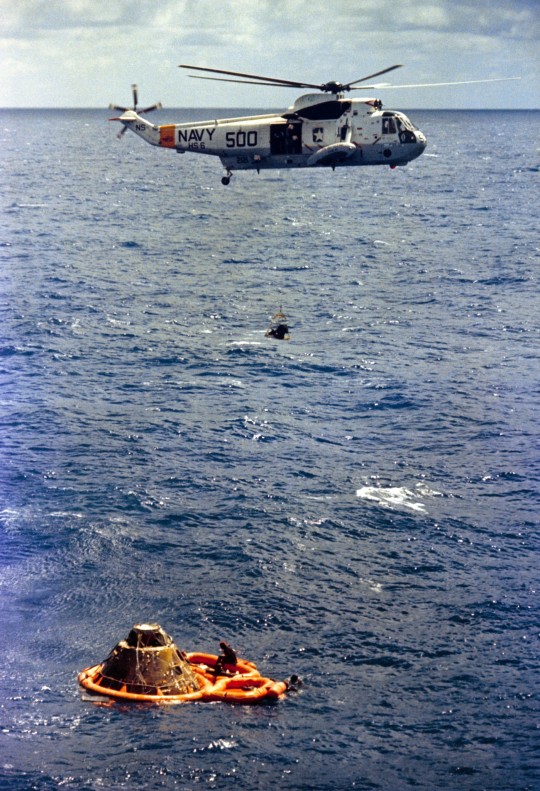
Apollo 14 recovery operations in the South Pacific Ocean - February 9, 1971
#NASA#USN#Apollo 14#Spacecraft#Command Module#Sikorsky#SH-3#Sea King#Moon Mission#Recovery#Helicopter
83 notes
·
View notes
Photo

2024 December 14
Apollo 17's Moonship Image Credit: Apollo 17, NASA, (Image Reprocessing: Andy Saunders)
Explanation: Awkward and angular looking, Apollo 17's lunar module Challenger was designed for flight in the near vacuum of space. Digitally enhanced and reprocessed, this picture taken from Apollo 17's command module America shows Challenger's ascent stage in lunar orbit. Small reaction control thrusters are at the sides of the moonship with the bell of the ascent rocket engine underneath. The hatch allowing access to the lunar surface is seen at the front, with a round radar antenna at the top. Mission commander Gene Cernan is clearly visible through the triangular window. This spaceship performed gracefully, landing on the Moon and returning the Apollo astronauts to the orbiting command module in December of 1972. So where is Challenger now? Its descent stage remains at the Apollo 17 landing site in the Taurus-Littrow valley. The ascent stage pictured was intentionally crashed nearby after being jettisoned from the command module prior to the astronauts' return to planet Earth.
∞ Source: apod.nasa.gov/apod/ap241214.html
187 notes
·
View notes
Text


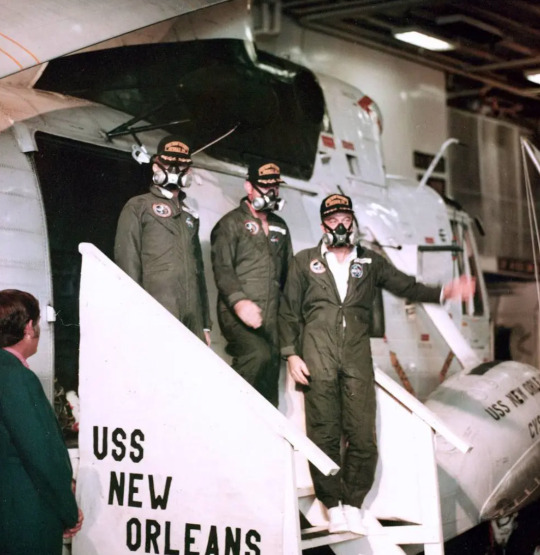

February 9, 1971 — The crew of Apollo 14 splashes down in the south Pacific Ocean
Apollo 14's Kitty Hawk command module reentered and splashed down after nine days in space and was recovered by the USS New Orleans. The crew spent three weeks in quarantine following their return from the moon to prevent backwards contamination. Kitty Hawk is now on display at the Apollo/Saturn V Center at the Kennedy Space Center Visitor Complex in Florida.
79 notes
·
View notes
Text

The Apollo 14 Command and Service Module Kitty Hawk (CSM-110) prior mating to the Spacecraft-Lunar Module Adapter (SLA-17) at the Manned Spacecraft Center integrated work stand.
Date: November 10, 1970
source
#Apollo 14#Apollo CSM Block II#CSM-110#Kitty Hawk#NASA#Apollo Program#H-type mission#Assembly#Manned Spacecraft Operations Building#MSOB#Kennedy Space Center#KSC#Florida#November#1970#my post
60 notes
·
View notes
Text

1969, February 14… Apollo 9 press briefing At the Kennedy Space Center – Florida, Apollo 9 LMP Russell “Rusty” Schweickart briefed the press about the spacesuit for his upcoming spacewalk. For the very first time, Apollo 9 tested both the North American Aviation Command Module and the Grumman Lunar Module in Low Earth Orbit. Schweickart’s spacewalk would demonstrate an emergency transfer between both spacecraft. It was the last spacewalk before the Apollo 11 lunar-EVA in July 1969. Due to a construction delay at Grumman, the original Apollo 8 & 9 missions were swapped. By December 1968, Rusty Schweickart had completed vacuum testing the space suit portable life support chest- and backpack hardware in the altitude chamber of the Space Environment Simulation Laboratory at MSC Houston Texas. Note on the white Velcro strap the battered NASA-issued Omega Speedmaster 105.012 chronograph which was missing the lower push button. We know that some of the NASA-issued Speedmaster chronographs were solely used in astronaut training, n° 24 being the best-knwon example! (Photos: NASA)
#321#861#chronograph#Speedmaster#Moonwatch#Moonwatchuniverse#NASA#Apollo#astronaut#Omega#Omega Bienne#montres#uhren#pilot watch#spaceflight#spacesuit#military#Zulu time#Velcro
38 notes
·
View notes
Text
55 Years Ago: Apollo 12 Launches
The 363-feet tall Apollo 12 space vehicle launches from Pad A, Launch Complex 39 at NASA`s Kennedy Space Center in Florida at 11:22 a.m. EST, Nov. 14, 1969. Aboard the Apollo 12 spacecraft were astronauts Charles Conrad Jr., commander; Richard F. Gordon Jr., command module pilot; and Alan L. Bean, lunar module pilot. Apollo 12 was the United States` second lunar landing mission.
Put on your red/blue glasses and gaze across the western Ocean of Storms on the surface of the Moon. The 3D anaglyph features Apollo 12 astronaut Pete Conrad visiting the Surveyor 3 spacecraft in November of 1969. Surveyor 3 had landed at the site on the inside slope of a small crater about 2 1/2 years earlier in April of 1967. Visible on the horizon beyond the far crater wall, Apollo 12's Lunar Module Intrepid touched down less than 200 meters (650 feet) away, easy moonwalking distance from the robotic Surveyor spacecraft. This stereo image was carefully created from two separate pictures (AS12-48-7133, AS12-48-7134) captured on the lunar surface. They depict the scene from only slightly different viewpoints, approximating the separation between human eyes.


#apollo 11#apollo#love & rockets#rocket launch#1969#astronomy#nasa#astronomers#universe#nasa photos#astrophotography#outer space#astrophysics#nasawebb#hubble space telescope#space travel#space program#international space station#our universe#the universe#space shuttle#space science#space exploration#spacecraft#nasa science#science facts#planetary science#science#astronomy facts#astrography
21 notes
·
View notes
Text
Earth in the lunar sky is nearly 14 times larger than the Moon in Earth’s sky. Earth is also about 2.5 times more reflective than the Moon, although the exact value from moment to moment varies with cloud cover. So full Earth viewed from the Moon is about 35 times brighter than full Moon viewed from Earth. Unlike what’s implied by NASA’s Earthrise photo, snapped from the orbiting Apollo 8 command module, Earth neither rises nor sets on the Moon. Viewed from the Moon’s near side, Earth never leaves the sky. From the Moon’s far side, you might never know Earth existed at all.
— Starry Messenger: Cosmic Perspectives on Civilization - Neil deGrasse Tyson (2022)
#neil degrasse tyson#starry messenger#cosmic perspective#books#book quotes#quotes#science#nonfiction#philosophy#atypicalreads#readblr#reading#bookblr#moon#earth#apollo 8
34 notes
·
View notes
Text
GETTING TO THE MOON

On the Apollo missions, the lunar module was in a compartment stage beneath the command module engines. Once the ship had reached a certain distance, that stage would separate and free the lunar module.

The command module would then dock with the lunar module. The spacecraft then continued on to lunar orbit in thesis configuration.
Upon arrival at the separation point, two astronauts would crawl through a pressurized tunnel from the command module into the lunar module. The third astronaut remained in the command module, orbiting above the moon.

The lunar module then separated and proceeded to its landing point. The lunar module (or LEM - Lunar Excursion Module, as it was referred to at this point) became home for the two astronauts during their brief stay on the moon.
-Apollo 11 stayed 21 hrs 36 mins
-Apollo 12 stayed 31.6 hrs
-Apollo 13 never landed
-Apollo 14 stayed 33 hrs
-Apollo 15 stayed 67 hrs
-Apollo 16 stayed 71 hrs
-Apollo 17 (the last men on the Moon) stayed just seconds shy of 75 hrs.

For departure the top half of the LEM, or ascent stage, would fire its rockets and ascend into lunar orbit to rendezvous with the command module. The descent stage was left behind on the lunar surface.
Once the ascent stage had docked with the command module the astronauts would transfer back. The ascent stage was then jettisoned, and all three astronauts rode the command module back to Earth to splashdown somewhere in the ocean.
Just a reminder of what REAL astronauts experienced back in the day. Meanwhile, in present times, everyone seems to be going ga-ga over a bunch of celebrities who central high and experienced a brief moment of zero-G.
#Apollo#command module#lunar module#LEM#Lunar Excursion Module#moon landing#it's real!#NASA#space travel#real space travel
9 notes
·
View notes
Photo

Awkward and angular looking, Apollo 17's lunar module Challenger was designed for flight in the near vacuum of space. Digitally enhanced and reprocessed, this picture taken from Apollo 17's command module America shows Challenger's ascent stage in lunar orbit.
APOD: 2024 December 14 - Apollo 17's Moonship
13 notes
·
View notes
Text
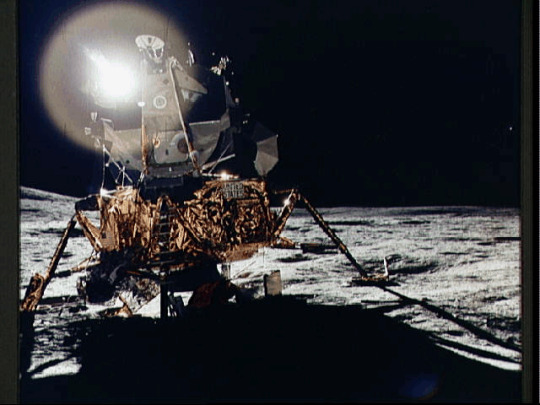
Apollo 14 on the Moon - December 9th, 1995.
"The glare from the Sun reflects off the lunar module of the Apollo 14 mission to the Moon as it rests on the lunar surface in February of 1971. Astronauts Alan Shepard and Edgar Mitchell walked on the Moon's surface while astronaut Stuart Roosa piloted the orbiting command module. Coming only months after the abortive Apollo 13 mission, Apollo 14 was famous for long exploratory Moon walks, collecting samples of lunar bedrock from Cone Crater, deploying the Apollo Lunar Surface Experiments Package, and hitting golf balls. The slope rising to the rim of Cone Crater is visible at the left edge of the photo."
49 notes
·
View notes
Text



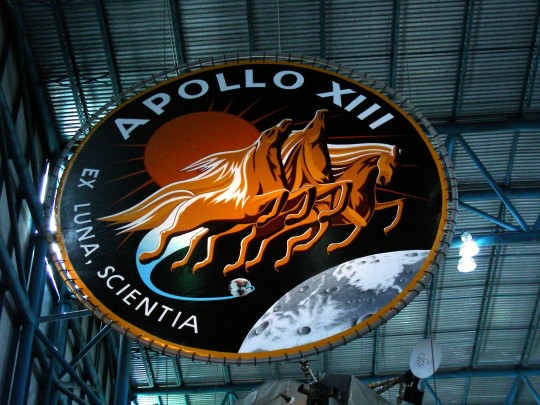

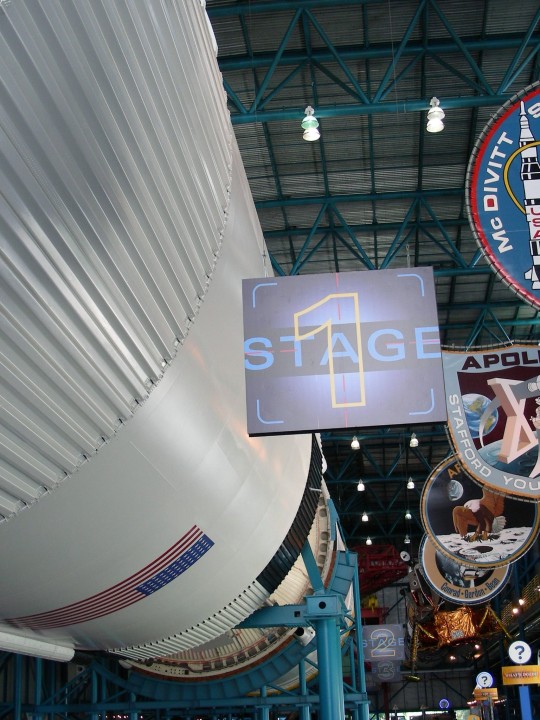








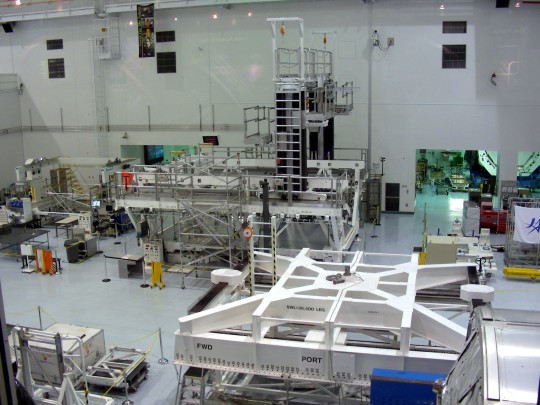





NASA was created to replace NACA on October 1, 1958.
#NASA#created#1 October 1958#anniversary#US history#logo#USA#summer 2009#2010#original photography#Florida#landmark#vacation#travel#tourist attraction#Saturn V moon rocket#interior#exterior#Kennedy Space Center Visitor Complex#Launch Complex 39B (LC-39)#vehicle assembly building#space suit#National Aeronautics and Space Administration#NACA#Apollo 14 Command Module#Launch Complex 39A (LC-39)
6 notes
·
View notes
Text
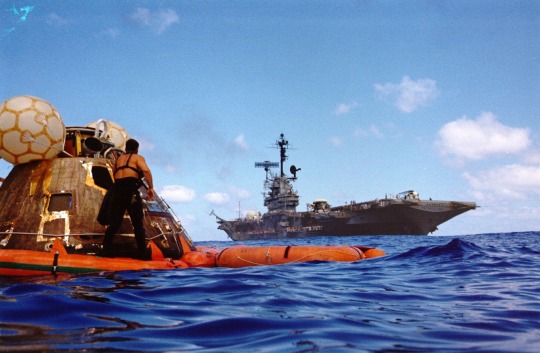
(12/19/1972) A water-level view of the Apollo 17 Command Module (CM) floating in the Pacific Ocean following splashdown and prior to recovery. The prime recovery ship, the U.S. Navy aircraft carrier USS Ticonderoga (CVS-14), is in the background. When this picture was taken, the three-man crew of astronauts Eugene A. Cernan, Ronald E. Evans and Harrison H. Schmitt, had already been picked up by helicopter and flown to the deck of the recovery ship. The spacecraft was later hoisted aboard the USS Ticonderoga. A United States Navy UDT swimmer stands on the flotation collar. Apollo 17 splashdown occurred at 13:24:59 (CST), 19 December 1972, about 350 nautical miles southeast of Samoa.
Nasa Image
23 notes
·
View notes
Text
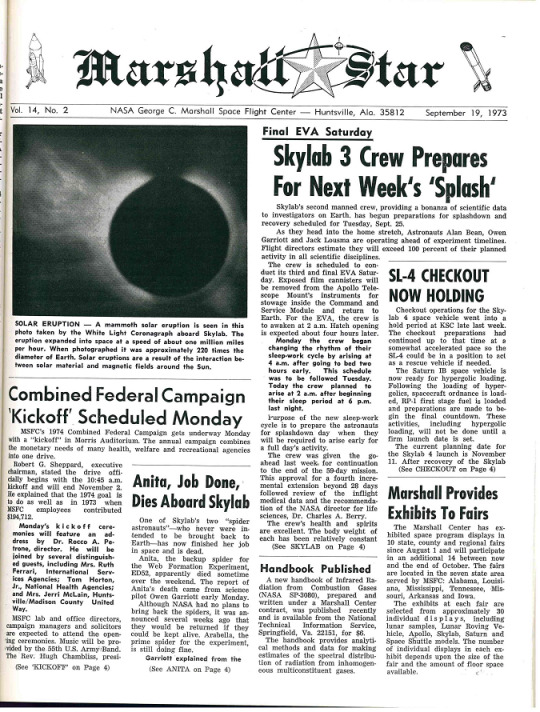
This edition of the Marshall Star from 1973, a newsletter of the George C. Marshall Space Center in Huntsville, Alabama, features an article titled “Anita, Job Done, Dies Aboard Skylab.”
The article goes on to explain that Anita was the back-up spider in the Web Formation Experiment. The primary spider, Arabella, was still alive at the time of the newsletter. Arabella’s current whereabouts are unknown.
Record Group 255: Records of the National Aeronautics and Space AdministrationSeries: Marshall StarFile Unit: Marshall Star Volume 14
Marshall Star Vol. 14, No. 2 . NASA George C. Marshall Space Flight Center -- Huntsville, Ala. 35812 . September, 1973 Final EVA Saturday Skylab 3 Crew Prepares For Next Week's 'Splash' Skylab's second manned crew, prvoding a bonanza of scientific data to investigators on Earth. has begun preparations for splashdown and recovery scheduled for Tuesday, Sept. 25. As they head into the home stretch, Astronauts Alan Bean, Owen Garriott and Jack Lousma are operating ahead of experiment timelines. Flight directors estimate they will exceed 100 percent of their planned activity in all scientific disciplines. The crew is scheduled to conduct its third and final EVA Saturday. Exposed film cannisters will be removed from the Apollo Telescope Mount's instruments for stowage inside the Command and Service Module and return to Earth. For the EVA, the crew is to awaken at 2 a.m. Hatch opening is expected about four hours later. Monday the crew becan changing the rhythm of their sleep-work cycle by arising at 4 a.m. after goint to bed two hours early. This schedule was to be followed Tuesday. Today the crew planned to arise at 2 a.m. after beginning their sleep period at 6 p.m. last night. Purpose of the new sleep-work cycle is to prepare the astronauts for splashdown day when they will be required to arise early for a full day's activity. The crew was given the go- ahead last week for continuation to the end of the 59-day mission. This approval for a fourth incremental extension beyond 28 days followed review of the inflight medical data and the recommendation of the NASA director for life sciences, Dr. Charles A. Berry. The crew's health and spirits are excellent. The body weight of each has been relatively constant (See SKYLAB on Page 4) SOLAR ERUPTION -- A mammoth solar eruption is seen in this photo taken by the White Light Coronagraph about Sklyab. The eruption expanded into space at a speed of about one million miles per hour. When photographed it was approximately 220 times the diameter of Earth. Solar eruptions are a result of the interaction between solar material and magnetic fields around the Sun. Combined Federal Campaign 'Kickoff' Scheduled Monday MSFC's 1974 Combined Federal Campaign gets underway Monday with a "kickoff" in Morris Auditorium. The annual campaign combines the monetary needs of many health, welfare and recreational agencies into one drive. Rober G. Sheppard, executive chairman, stated the drive officially begins with the 10:45 a.m. kickoff and will end November 2. He explained that the 1974 goal is to do as well as in 1973 when MSFC employees contributed $194,712. Monday's kickoff ceremonies will feature and address by Dr. Rocco A. Petrone, director. He will be joined by several distinguished guests, including Mrs. Ruth Ferrari, International Services Agencies; Tom Horton, Jr., National Health Agencies; and Mrs. Jerri McLain, Huntsville/ Madison County United Way. MSFC lab and office directors, campaign mangers and solicitors are expected to attend the opening ceremonies. Music will be provided by the 55th U.S. Army Band. The Rev. Hugh Chambliss, presi- (See 'KICKOFF' on Page 4)
Anita, Job Done, Dies Aboard Skylab One of Skylab's two "spider astronauts" --who never were intended to be brought back to Earth--has now finished her job in space and is dead. Anita, the backup spider for the Web Formation Experiment, ED52, apparently died sometime over the weekend. The report of Anita's death came from science pilot Owen Garriott early Monday. Although NASA had no plans to bring back the spiders, it was announced several weeks ago that they would be returned if they could be kept alive. Arabella, the prime spider for the experiment, is still doing fine. Garriott explained from the (See ANITA on Page 4)
30 notes
·
View notes
Text







February 5, 1971 — Apollo 14 becomes the third manned mission to land on the moon
Lunar Module Antares touched down in the Fra Mauro highlands and spent 33.5 hours on the lunar surface. Commander Alan Shepard, now the oldest man in space at 47, and Lunar Module Pilot Ed Mitchell performed two EVAs during which they deployed the ALSEP and collected 94 pounds (43 kg) of lunar samples. Shepard also hit two golf balls that soared for "miles and miles and miles."
35 notes
·
View notes
Text
Cancelled Equipment: Apollo Parawing or Rogallo Wing and dry landing

Early on in development, engineers studied the feasible of equipping the Apollo Command Module with a Parawing to facilitate landing on dry land.

"The internal subsystems required for the parawing recovery system include a flight control system, a wing pressurization system, a cable control system, and the necessary sensing and actuation systems. Manual overrides are provided for drogue chute deployment, wing extraction, wing inflation, and cable payouts. Panel lights will indicate the sequence and status of all events.





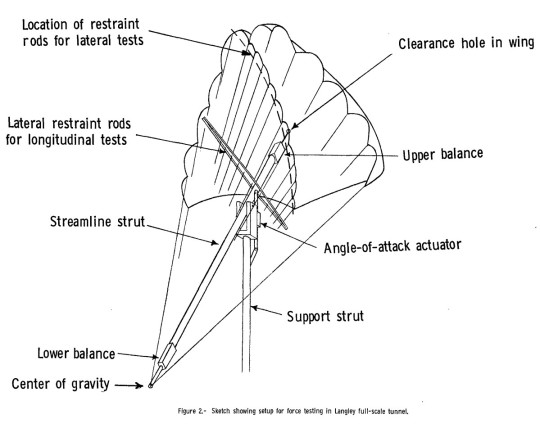
The requirement for an emergency landing provision under all conceivable modes of failure is best fulfilled by ejection seats and personnel parachutes, primarily because of their relatively light weight, dependability, and advanced state of development. During launch and early-boost aborts when the capsule does not reach an altitude above 10,000 feet, escape will be by means of the ejection seats. Above that altitude, a normal wing deployment may be executed. During entry, escape ejection would occur below an altitude of 20,000 fect. Provisions are made to jertison an uninflated or otherwise faulty wing. Following this, the escape hatch is blown and personnel are ejected in a timed sequence.
PERFORMANCE Recovery of the Apollo spacecraft during entry is normally initiated at an altitude of 80,000 feet and a velocity of Mach 1.1 by the deployment of a 14-foor drogue chute which provides an added margin of stability and decelerates the spacecraft to an equilibrium descent rate of 115 knots indicated air speed.
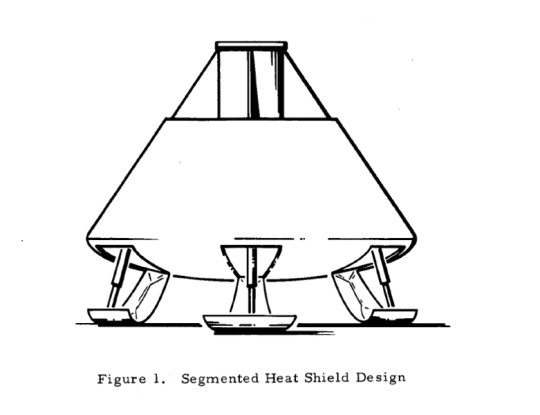

Different types of proposed landing gear
At 40,000 feet, the drogue chute extracts the wing from its stowage compartment and the wing is deployed as depicted in Figure 65. By controlling the rigging, the partial lift thus developed (along with the unbuckling action of the inflated booms and keel) results in a smooth and reliable transition to gliding flight when the apex is released. Deployment requires approximately 20 seconds, with equilibrium glide achieved at an altitude of 36,000 feet."
Ultimately, just like the Rogallo wing for the Gemini capsule, this feature was cancelled due to time and money limitations.
SDASM Archives: Apollo Doc018
source, source
NASA ID: link, link, link, link, link, link, link
#Apollo CSM Block I#Apollo CSM Block II#NASA#Apollo Program#Rogallo Wing#Landing#Recovery#Cancelled#1960s#my post
31 notes
·
View notes